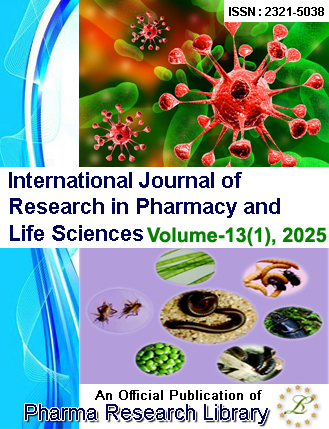Preparation and Characterization of Labetalol Nanoparticles by Precipitation Techniques
Keywords:
Labetalol Hydrochloride, Polymeric Nanoparticles, Controlled Release, Bioavailability, Precipitation Technique, FT-IR, Zeta Potential, Encapsulation Efficiency, Super Case–II Transport, Drug DeliveryAbstract
The present study focuses on the formulation and evaluation of controlled-release nanoparticles of Labetalol Hydrochloride to enhance its oral bioavailability and therapeutic efficacy. Nanoparticles were successfully prepared using precipitation techniques incorporating biocompatible polymers such as Gelatin, Hydroxypropyl methylcellulose (HPMC), and Eudragit S100. Fourier-transform infrared (FT-IR) spectroscopy confirmed the absence of chemical interactions between drug and polymers, ensuring compatibility. The prepared nanoparticles displayed a smooth, spherical morphology with size ranging from 122.01 ± 4 nm to 642.30 ± 3 nm and were characterized by high yield and uniform encapsulation.Zeta potential analysis indicated good colloidal stability of the nanoparticles, with the most stable formulation exhibiting a zeta potential of 20.1 ± 1.4 mV. Encapsulation efficiency varied between 32.0 ± 0.4% to 84.5 ± 0.6%, correlating directly with increased polymer concentrations. In vitro release studies demonstrated a sustained drug release profile, with reduced burst effect and prolonged duration attributed to polymer entrapment. The drug release followed a Super case–II transport mechanism, suggesting erosion-controlled kinetics. Among all formulations, LN1 showed the most favorable release profile with 86.01% of drug released over 12 hours. The controlled release behavior observed in this formulation suggests its potential utility in maintaining steady plasma levels and minimizing dosing frequency. These findings indicate the promise of the nanoparticulate system for enhancing the delivery of poorly water-soluble antihypertensive agents like Labetalol. In conclusion, nanoprecipitation proved to be an effective technique for developing polymeric nanoparticles of Labetalol with favorable physicochemical and release characteristics. The results suggest a significant improvement in the bioavailability of Labetalol, with potential application as a long-acting formulation. Further in vivo investigations are recommended to validate these findings and evaluate pharmacokinetic advantages in suitable animal models.
Published
Issue
Section
License
Copyright (c) 2025 Author

This work is licensed under a Creative Commons Attribution-NonCommercial 4.0 International License.

